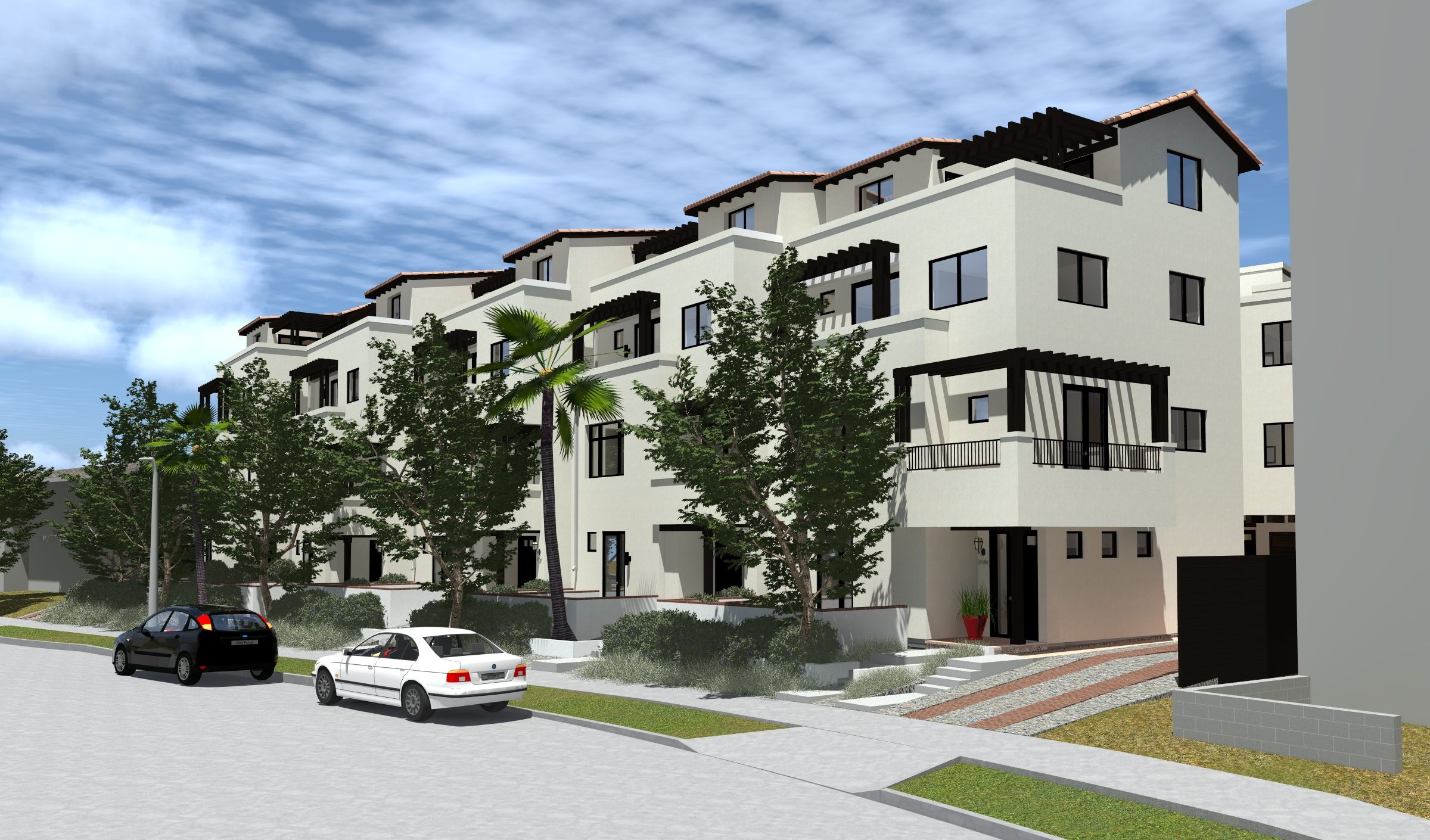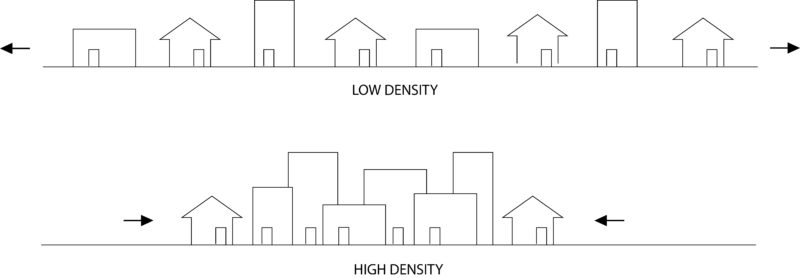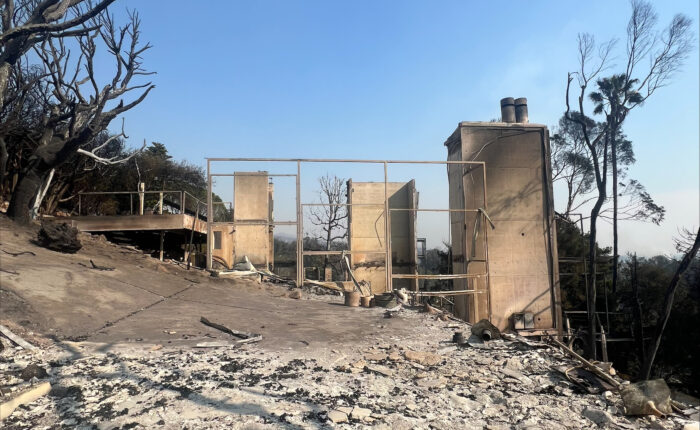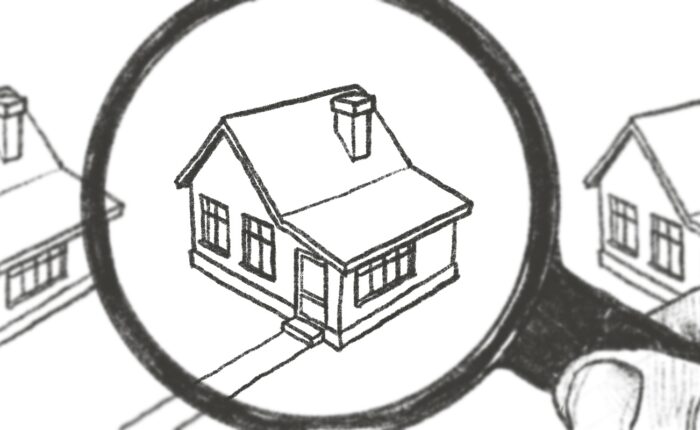In our travels around Los Angeles presenting projects to various community groups, we face a lot of fearful residents concerned about increased density in the city. Everyone wants more affordable housing, but no one seems to want more housing. And as long as people keep moving to Los Angeles, we need more housing. After giving this subject much thought (which we do since we’re in the business of designing housing), and recognizing that growing pains are, well,painful, we’ve concluded that the benefits to increasing density in Los Angeles far outweigh the concerns. At the risk of fueling your frustration, we’re here to try and convince you that the right place to build more housing is right here in the middle of Los Angeles.
*DENSITY – the degree of compactness of a city
We don’t want to pay for more infrastructure.
Urban sprawl is not your friend.The farther the city expands, the more miles of infrastructure (roads, power,sewer, water, etc.) the city has to maintain over the long-term. None of us like the potholes that swallow you whole while driving down major streets, but the more miles of road to maintain, the longer it will take to fix the existing issues. While growing pains may be prevalent, the long-term savings in infrastructure coverage will benefit Los Angeles residents.
We don’t want to be tied to our car.
More people living in a smaller geographic area means more people to support public transportation. This can result in more transportation options in the future. During our recent team member search, less than 50% of the interviewees had a car. Instead, they were looking for a position near their home (or planning to move nearby) so they could use public transportation and/or rideshare to the office. In neighborhoods (yes, you too Frogtown!) where parking is scarce, this would benefit the local residents by freeing up street space. No more musical chairs cars on street cleaning days? Yes, please!
We want more pedestrian and bike friendly development.
People and talent are attracted to areas that encourage economic opportunities and provide accessibility to work and entertainment. The city’s zoning plan could target areas for housing and business growth, making amenities and basic services more readily available. This would promote more “downtown” hubs that are pedestrian-oriented, which inherently promote social activities and act as a safe, welcoming area for community involvement. Think of the possibilities for space we currently dedicate to parking lots – SO MANY ACTIVITIES!
We want to live in a “greener” city.
Urban areas tend to be more efficient. With amenities in close proximity, less driving and commuting is required. Less driving means fewer auto emissions. Increased density also demands a higher efficiency public transit network to connect the main hubs of a city, also reducing driving. Once the automobile is no longer the “easy” transportation solution, public transit with higher utilization will be maintained and upgraded to keep up with the demand and make it a more pleasant experience for all users.
In addition to supporting more sustainable transportation options, studies have shown that higher density encourages productivity and development. Higher productivity can be linked to advances in technology and business to improve living standards, and let’s face it, raises the economic gains of the community.
We don’t like the other options.
A growing population means that we need to maintain and protect our food supply. If the alternative to adding more housing in the city means that we end up expanding out and building over arable land that could be used for growing food… well, that seems like a “no-brainer.”
While we certainly believe that development done in a thoughtful manner (smart development) is good development, we fully realize that not all development is smart nor good. Nevertheless, to us, the decision is an easy one. In addition, the city’s stringent new linkage fees and Transit Oriented Communities (TOC) incentives should encourage housing developments to include dedicated affordable housing units for a broader range of housing options in the future.
Have we convinced you yet? If not, let us know what you think about this hot button topic. We welcome a polite and thoughtful discussion. Want to know more about what we consider “smart” development? Keep an eye out for future posts.
NOTE: We reserve the right to limit inappropriate or disrespectful comments. Keep it friendly, please!
To learn more about some of the groups supporting housing in Los Angeles, please see our attached list of articles/links.





Excellent piece! The time is right for us to identify more facts and make good decisions on this subject. I’ve been asked ‘why greater density’ many times and so this article is my new go-to…
Looking forward to more studies, supporting factors, and what your team considers “smart development”. Keep up the good work.
honestly i dunno Tracy how i feel personally versus politically-policy-WISE ? To me ; Los Angeles is looking more and more like a steaming, teeming, horror metropolis of the not too distant future. Of course, there is always Jodie Foster’s solution from the movie ELYSIUM … poor Fabio he was almost hysterical during that interview which seemed strange as he’s still a part of one of many underground scenes here in L.A. so you’d think the notion of what i’m describing would turn him on. Well, i’m no Fabio (in case you didn’t realize that) and for me it feels not so cool plenty of the time. Of course, new housing versus affordable housing can be two very different things as i’m sure you’ve heard a thousand times already. Still, what L.A. is destined to become we cannot stop, so we might as well prepare for it by building more housing right here as you suggest. I just wish like Cher and Miley and Fabio, i could retreat to Malibu when the time comes, but that ain’t happening, so … mixed feelings
Great topic. There are so many ghastly examples, or and so many more mediocre ones that its understandably a hard sell. We need shining examples of places people genuinely want to live in so that affordability is not the only factor. I suggest that the starting point is to improve the quality of “increased density” housing without trying to push to “high” density straight off.
I suspect that if one could provide a pleasant lifestyle at lower cost and more convenience, it would sell, firt to those with no kids. Yes, if it only took 10-15 minutes to get to work, that would be huge, and if it was actually cheaper to live that would be a slam dunk.
Communal green (etc) spaces outside higher density dwellings are essential. Yet, non-negotiable features — for me — are a sense of tranquility in my home. First on my list is acoustic isolation from traffic and the neighbors/kids/pets/music. Nearly as important is natural daylight and some (small) space outside with sunlight and view of sky and even a little garden (pots are ok).
A lot of old row houses have been very creatively updated all over the world but old construction struggles with acoustic isolation on the long common walls. It was a revelation to me one day when I was taken to the penthouse apartment of a row house on a canal in old Amsterdam and saw that there was a communal private park with trees within the block of houses which formed a wall against the wind and noise.
I feel that hillside construction is perhaps under appreciated. It is very amenable to higher density since the slope allows a setback (terracing) that naturally provides access to sunlight and views, thus a sense of space and even privacy of sorts. Also its not generally taking away arable land. Electric vehicles use regenerative braking to recover some of the energy spent to climb the hill, so the energy penalty is not so bad.
Sure, public transport can be great in inner city areas served by a high density subway or a new take on this from the Boring Company, but we have enormous areas that are unlikely to be so well served any time soon. Here the last mile problem (2.5 miles uphill in my case) might be solved by affordable ride sharing where multiple occupancy and vehicle efficiency address the obvious traffic problem. Uber, Lyft and google maps, **integrated with mass transit** could revolutionize the public transport experience. The last mile problem is aggravated on hillsides, where ride hailing could be revolutionary.
We are up against the abundant experience of cheap and nasty construction, crowding, noise, pollution and widespread ugliness, particularly in the rental market. To make all this work we need examples of appealing architecture that make a good lifestyle more affordable. And to make it work we need equivalently good engineering and much much better construction practices.
Great Stuff! That graphic is amazing.